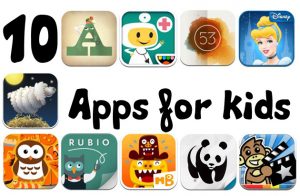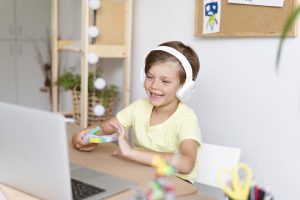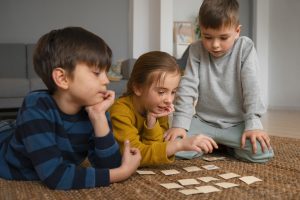Screen time during Covid – How much is too much?
Avoiding screen time for kids and toddlers has become nearly impossible during the COVID-19 pandemic. As schools closed and outdoor activities became restricted, young minds had to adapt quickly. They began taking online classes, often using their parents’ phones, laptops, or tablets, and some received new tablets as gifts. Video calls with friends and family became routine, replacing in-person playdates with virtual ones. Celebrations, including Zoom birthday parties, also went virtual. While the world faced a new virus, parents found themselves grappling with their consciences. They were now giving their children the very thing they once tried to limit: “screen time. Managing work from home and household tasks without assistance became a challenging balancing act. The demands of online learning from schools further exacerbated this.

It became unavoidable to completely avoid screen time for both toddlers and kids and supervision became all the more challenging. Of course, technology came to the rescue with tons and tons of educational apps being made throughout the lockdown. Some prominent websites even offered free subscriptions. Additionally, devices and tools equipped with parental controls and automatic screen locks became a saving grace. But equivocal challenge in front of all the parents was still the same, “How much screen time was too much?”

While some adhered to the recommendations of scientific and psychiatric associations, others followed the guidelines from the educational ministry. These guidelines often varied significantly. Some relied on word-of-mouth advice or online searches. These time limits proved insufficient, especially in nuclear families where both parents worked. I personally experienced this dilemma and continue to do so. Balancing my full-time job as a teacher while my daughter has just one hour of online class, even though it exceeds the recommended limit, is challenging.
Fortunately, my husband also works from home, but we still have to compromise on her screen time due to our work and household responsibilities. Educational apps can be helpful, but they still contribute to “screen time.” So, what’s the solution? While some may argue that things have changed, in my opinion, this problem persists until the pandemic is fully controlled, schools resume normal operations, and the world is vaccinated.
So here are a few pointers that can help us all overcome this tricky situation of managing our kids screen time:

Make Virtual time Constructive:
When confronted with the omnipresence of screen time, we can take charge of how it’s used. By focusing on educational applications like Mindspark, Khanacademy Kids, Brainpop Jr, ABCya, ABCmouse, DrBinocs, EPIC virtual library, PBS Kids Game, Prodigy, Mathway, and MonsterMath, we ensure that screen time contributes to learning, skill development, and curiosity stimulation.
These apps offer well-defined curricula, interactive games, and rewarding achievements, motivating children to advance in their education. Platforms like Brainpop Jr and ABCMouse present engaging videos and quizzes to reinforce fundamental concepts and encourage self-assessment. What sets these tools apart is their ability to empower kids to autonomously chart their learning journeys across various subjects, from geography to space sciences, social sciences, math, phonics, and conflict resolution, all under one roof.

Make their online time Interactive:
The biggest hurdle of the lockdown for kids was the isolation. Social distancing brought along with it a threat to the development of their social skills and Interactions. Which also meant their language learning and articulation was also impacted, especially for the kids who are shy by nature and need constant encouragement and motivation to interact. One way we figured out was to increase interactive sessions while they are online.
Be it a video call to their best friend, a family zoom call or online interaction with their teacher, every single interaction mattered. Together we would plan play dates with friends and jump on opportunities of Video calling grandparents which served the purpose of engaging both the seniors and the kids of the family despite the distance.

Get creative and develop skills:
With the onset of challenges, an array of opportunities emerged. It opened the possibility for every creative class, such as Art, Dance, Ballet, Abacus, Vedic Math, Craft, singing, piano lessons, and Sculpting, right from your home. The virtual platform meant there was no restriction to which academy you could join. You could do so from whichever place in the world. We tried to make the most of it by dedicating two to three days a week to one of such creative class.
It kept the little one occupied while we were at work, as well as they got exposed to different visual and preforming arts and skillsets making it a base for them to decide what they liked and wanted to pursue further. We also used a lot of free content on YouTube to learn sketching, canvas painting, piano lessons and baking cakes at home.
This was all about how to manage the screen time. But when we talk about how much is too much screen time, we must also understand that even if it is a conducive, constructive use of screen time, its still is ‘Screen Time’ activin its important to be regulated. Thus comes few off-screen activities that kids can do by themselves or with little bit of adult supervision.
Assign small chores at home:
Get them involved in the household chores like hanging clothes to dry, tidying up their rooms, putting plates for dinner, dusting, sweeping, etc. Encouraging them with a star chart and motivating them can help too.
Make them responsible learners:
Get them activities sheets, worksheets, puzzles and writing books to continue their learning offline. Having an open conversation about the challenges you are facing and how they could help you by being responsible for their learning can help. I used one way to make them aware of their rights and responsibilities and implement the same.

Board games and Treasure hunts:
Introduce them to traditional board games like Chess, snake and ladder, UNO, Carrom, Ludo, etc. Create pre-prepared fun actives at home like scavenger hunt, treasure hunt, shape checklists etc.
Pretend play:
Kids who are all by themselves may indulge into a pretend play by themselves. They may create an imaginary set of friends and engage in role-play. Do not worry, its normal and if guided properly it can be conducive for their emotional health. Imaginary friends allow children to explore a make-believe world that they create all by themselves. In fact, children with make-believe friends might be more imaginative and more likely to enjoy fantasy play and magical stories. These children tend to be more emphatic and observant towards their surrounding and peers.

Let them get Bored:
In today’s day, the best gift you could give to your kid is the freedom to experience boredom. Yes you heard me right! These days, we parents are so occupied in finding constructive ways to pass their time. We forget how we all grew up. We grew bored, found ourselves unsupervised most of the time, and eventually worked our way out by exploring ways to engage ourselves. Kids also require some unstructured free time, where they engage in unsupervised activities, alongside structured learning and other activities. Let them observe the world around and learn from it. It is not necesary to continously supervise them trust me!
Having said all of it, one last thing but the most important factor about engaging your kids in a good condusive way is to make them aware of the situation around. Do not pass on your panic or uncertainty but surely let them know why the things have changed and how they can make the best of this time. Lastly since now many places have reduced cases and even vaccines are now in place, some outside time making sure of their safety would not be bad at all.




